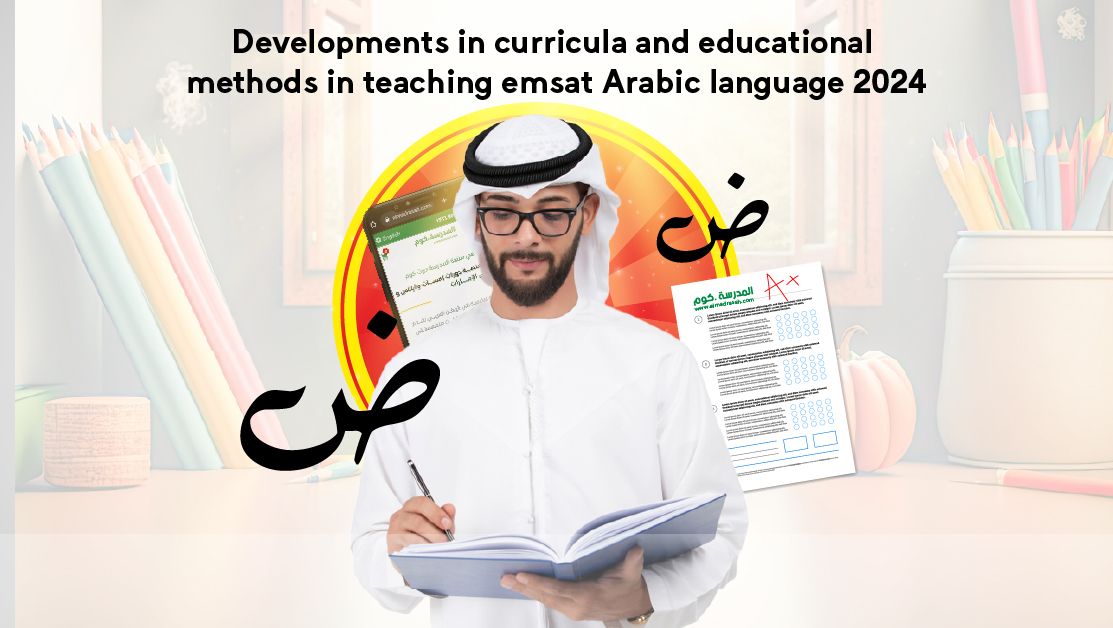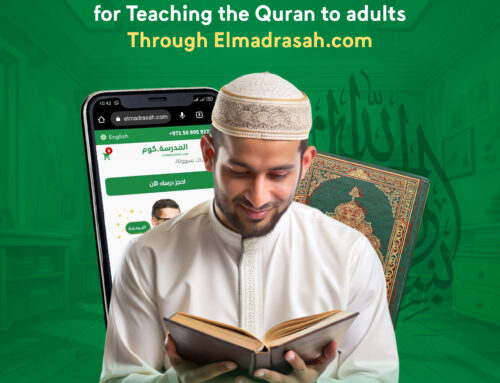
The emsat Arabic exam is a standardized test that measures Arabic language skills for students in the United Arab Emirates. It specializes in testing students’ proficiency in reading and writing in Arabic and covers the following grade levels: 1st, 4th, 6th, 8th, 10th, and 12th grades. This exam has several aspects that contribute to determining students’ level of mastery in using the Arabic language. Emsat Arabic is a vital test for gauging students’ Arabic language level and is a core part of ongoing efforts to enhance education quality in Emirati schools. With evolving societal needs, developing curricula and modernizing teaching methods have become crucial to ensuring educational excellence. Teaching emsat Arabic language 2024 is an essential part of students’ learning journey, and following its developments and improvements is necessary to meet students’ needs in our current era. In this article, we will discuss the new educational methods in teaching emsat Arabic language 2024.
First: What is the purpose of teaching emsat Arabic language 2024 exam?
The emsat Arabic exam aims to:
– Measure students’ acquisition of core Arabic language skills like listening, speaking, reading, and writing.
– Evaluate students’ mastery of Arabic grammar rules and vocabulary.
– Identify strengths and weaknesses in students’ learning of the Arabic language.
– Provide teachers and parents with accurate performance indicators of student levels.
– Assess the effectiveness of Arabic teaching methods and curricula in schools.
– Diagnose difficulties faced in learning and teaching Arabic.
– Motivate students to improve their Arabic proficiency.
– Ensure a standardized, high level of Arabic mastery among all students nationwide.
– Aid in making appropriate educational decisions to develop Arabic language teaching.
– Used as one of the requirements for university admission and career pathways.
What does the emsat Arabic exam structure consist of?
The structure and content of the emsat Arabic exam consists of several main components:
1- Listening: Includes tests that measure audio comprehension skills by listening to Arabic audio passages and then answering questions about them.
2-Conversation: Measures speaking and communication skills through conversations between the examiner and student.
3- Reading: Includes reading diverse texts, answering comprehension questions, and inferring information.
4- Writing: Measures written expression ability by writing an essay or short paragraph.
5- Vocabulary and Grammar: Includes questions about Arabic language vocabulary, grammar rules, and morphology.
6- Arabic Culture: Measures knowledge of Arabic culture and heritage.
The distribution of scores and relative weights for each component varies based on grade level and student proficiency.
Score distribution and relative weights for each component in the emsat Arabic exam:
The score distribution and relative weights for the emsat Arabic exam’s components and skills vary depending on the educational stage and grade taking the exam. But the approximate score distribution can be summarized as follows:
– Listening: Around 20-25% of total exam score.
– Conversation: Around 10-15% of total score.
– Reading: Around 15-20% of total score.
– Writing: Also around 15-20% of total score.
– Vocabulary and Grammar: Around 25-30% of exam score.
– Arabic Culture: Maybe 5-10% of total score.
The percentages for applied skills like listening, speaking, and writing increase at higher grade levels.
Assessment criteria for the emsat Arabic language exam:
The UAE Ministry of Education follows a set of criteria and regulations for evaluating the emsat Arabic language exam, most notably:
– Accurately measuring targeted language skills like reading comprehension, written expression, and listening comprehension.
– Ensuring exam content is appropriate for the Arabic curriculum mandated for each grade’s students.
– Diversifying exam questions between essay and multiple choice objective questions.
– Formulating exam questions in formal Arabic free of errors.
– Covering different language aspects like grammar, morphology, rhetoric, and vocabulary.
– Clarity of instructions for each question and ease of understanding by students.
– Specifying suitable time for each test, enabling students to answer accurately.
– Appropriate distribution of scores across the exam’s different questions and skills.
– Ensuring validity of grading procedures and objective, fair scoring.
– Providing reviews and evaluations for teachers and students to improve teaching and learning.
What are the educational methods in teaching emsat Arabic language in Preparing for the emsat test?
There are various educational methods in teaching emsat Arabic language that teachers can adopt in exam preparation, including:
– Focusing on core skills like listening, speaking, reading, and writing since the exam measures these skills.
– Explaining grammar and morphology rules in a simplified manner and training students to apply them.
– Developing summarization and inference skills from texts.
– Training students in listening comprehension and reading comprehension using diverse texts.
– Continuously introducing new vocabulary and explaining meanings.
– Accustoming students to speed reading texts to manage time.
– Posing exam-style questions to students and discussing answers.
– Conducting mock exams and providing students with constructive feedback and reviews.
– Psychologically preparing students and acclimating them to formal exam conditions.
– Leveraging previous exam results to develop remedial plans for weaknesses.
And what about the distinctive methods followed in teaching the Emsat Arabic language:
– The inquisitive method: focuses on stimulating students to explore the Arabic language and understand its rules through interaction with texts and linguistic materials. Students are encouraged to ask questions and actively discover patterns and models in the Arabic language.
– The cooperative method: encourages students to work together in small groups or teams to promote cooperation and interaction. Cooperative learning activities are organized so that students collaborate in understanding, analyzing texts, and producing written and oral works.
– Project-based method: focuses on students learning by accomplishing a project within the curriculum. This may involve preparing research reports, creating artwork, or producing short films in Arabic. This method requires guidance and follow up from the teacher to achieve educational goals.
– The interactive games method: uses interactive activities and games to enhance learning Arabic in a fun and engaging way. Language games and interactive activities can be used to teach grammar rules, vocabulary, and other language skills.
– Technology-based method: utilizes advanced technology like computers, educational software, phone applications, and multimedia in teaching Arabic. Multimedia can be used to reinforce vocabulary and language skills and encourage students to communicate and interact in Arabic.
– Discovery-based method: encourages students to explore the Arabic language and discover patterns and rules on their own. This method relies on presenting linguistic materials in an ambiguous or indirect way, so students have to discover rules and patterns and analyze them through interaction and experience.
These methodologies may vary between schools, teachers, and countries. Many other diverse teaching styles may be used to meet students’ needs and preferences. Ultimately, the focus should be on providing an educational environment that encourages students’ active participation and enhances their language skills development in Arabic.
The advancements in educational methods in teaching Emsat Arabic language 2024:
Curriculum and educational methods in teaching emsat Arabic language can differ from one country to another and from one educational institution to another. However, development in the field of teaching and learning Arabic is expected to continue. However, curricula and educational methods in education in general are always improving. Curricula may be developed to achieve more comprehensive and motivating educational goals. Teaching methods can be adapted to suit students’ needs, orientations, and available technology. Developing curricula and educational methods in teaching emsat Arabic language can involve many aspects, such as:
1- Motivating communication skills: Focus can be placed on developing students’ language communication skills by encouraging them to use Arabic in conversations and discussions and expressing their ideas effectively.
2- Using technology in education: Advanced technology can be used in teaching the Arabic language, such as interactive educational programs, multimedia, and online learning platforms, to enhance student interaction and active participation.
3- Project-based learning method: Project-based educational activities can be implemented to promote critical thinking, innovation, and collaboration among students. These activities may involve producing written works and creating creative projects.
4- Diagnostic assessment: Diagnostic assessment methods can be used to evaluate students’ levels, identify their strengths and weaknesses, and build appropriate educational strategies to meet their individual needs.
5- Critical thinking and creativity: Critical thinking and creativity can be enhanced by implementing analytical and thoughtful activities that apply linguistic concepts, promote understanding of texts, and develop students’ perspectives.
What are some digital applications and resources that I can use to learn the Arabic language?
There are several applications and digital resources that you can use to learn the Arabic language. Here are some examples:
1- Duolingo: Duolingo is one of the most popular language learning applications, including Arabic. The app offers interactive lessons and games for learning reading, writing, language comprehension, and conversation.
2- Memrise: Memrise provides a wide range of interactive lessons and exercises for learning Arabic. The app utilizes the spaced repetition technique to help students effectively remember words and phrases.
3- ArabicPod101: This website offers a vast collection of audio lessons, videos, and other educational resources for learning Arabic. The content covers different proficiency levels, starting from beginners to advanced learners.
4- Rosetta Stone: Rosetta Stone is one of the leading language learning applications. The program provides comprehensive learning focusing on speaking, listening, reading, and writing.
5- LingQ: LingQ allows users to read Arabic texts and select the words and phrases they want to learn. Users can access materials curated by other users and engage in conversations with them.
6- ArabicOnline: This website offers intensive educational courses for learning the Arabic language. The curriculum covers beginner, intermediate, and advanced levels, with emphasis on reading, writing, and conversation.
7- HiNative: HiNative allows users to ask questions and inquiries about the Arabic language and get answers from native speakers.
Please note that these resources and applications are just suggestions, and you can explore and try them to find out which one suits your learning style best.
Common mistakes made while preparing for the emsat test:
- Excessive focus on theoretical grammar and morphology without practical application of the language.
- Neglecting to train students on some essential skills like listening, speaking, and writing expression.
- Using traditional teaching methods that are not engaging and do not develop critical thinking skills.
- Relying on memorization and recall instead of deep understanding and correct application.
- Not accounting for individual differences among students during explanation and practice.
- Lack of exercises and drills that resemble the exam questions and techniques.
- Overlooking the focus on time management and practicing completing the exam within a set time.
- Limiting yourself to textbooks without using other educational resources.
- Not conducting mock tests to ensure students are ready for the actual exam.
To help in preparing students for the emsat Arabic language exam, the following steps can be followed:
- Study Important Topics and Concepts: Students should study the topics and concepts related to the Arabic language covered in the EMSAT exam.
- Utilize textbooks and other educational resources to familiarize themselves with the required content.
- Practice Exercises and Practical Problems: Students should practice solving exercises and practical problems related to potential questions in the EMSAT exam. Accessing previous questions or trial models can help students become familiar with the types of questions and improve their skills in answering them.
- Focus on Key Language Skills: Students should focus on developing key language skills required in the EMSAT exam, such as reading, writing, linguistic comprehension, and oral communication. Intensive training sessions can be organized to practice and improve these skills.
- Review and Revision: Allocate time for reviewing and revising before the exam. Students should review concepts, language rules, and previously practiced exercises and problems.
- Using flashcards, summaries, and notes can help students effectively review the material.
- Time Management and Organization: Students should be aware of the exam timing and the allotted duration for each section. Organize time wisely, prioritize tasks, and allocate appropriate time for each question or task.
- Mock Exam Practice: Students can enhance their performance by regularly solving previous exam papers. They can identify mistakes and areas that need improvement, working to avoid them in the actual exam.
In general, preparation for the EMSAT Arabic language exam should be comprehensive, focusing on fundamental concepts, practical application, and practicing previous questions and problems that reflect the nature of the exam. Additionally, students should prioritize their comfort and overall well-being during the preparation period, ensuring they get sufficient sleep, proper nutrition, and engage in physical activity. This helps enhance their concentration and overall performance in the exam. Remember, good preparation requires patience and perseverance. Students should maintain a positive outlook and confidence in their abilities. With proper training and focused effort, they will have a better chance of excelling in the EMSAT Arabic
The role of Elmadrasah.com platform in providing the latest educational methods in teaching emsat Arabic language:
The Elmadrasah.com website plays an important role in providing the latest educational methods in teaching emsat Arabic language, by offering:
– Interactive lessons and educational activities specifically designed to develop various Arabic language skills.
– Multimedia of audio, visual, and educational videos that help in understanding and comprehending content.
– Worksheets and exercises that teachers can download and use with students in class or as homework.
– Mock tests that measure student’s level and help them prepare for the real exam.
– Ready lesson plans and ideas that teachers can benefit from in preparing their lessons and activities in innovative ways.
– A forum for exchanging experiences between teachers and providing advice and guidance on best practices.
– Analytical and statistical reports on student performance help teachers evaluate their teaching.
– Rich and constantly updated content that keeps up with the latest educational and technical developments.
Details of the preparatory course for emsat Arabic offered through Elmadrasah.com website:
This course qualifies you to pass the Emirati emsat exam – for university admission, which aims to measure the development of Arabic language skills in terms of understanding, reading, and writing correct Arabic without grammatical and spelling errors. It targets high school students – grades 12 for university admission in colleges or universities and students of foreign scholarships, postgraduate studies, Masters, and PhDs. The course is characterized by:
– 100% online training course
– Providing sample questions from previous exams for practice
– The course is accredited by the Mohammed Bin Rashid Institution for Small Business Development
– The class duration is one hour, with flexibility in choosing morning and evening schedules
– Possibility of choosing intensive courses for two weeks of daily study at a rate of one hour
– Possibility of choosing a regular training course for one month at a rate of three times a week, class duration is one hour
Once registered, one of our representatives will contact you to set up a study schedule that suits you at the times (morning/evening) with 24/7 follow up.
In conclusion, in the midst of the challenges of modern education, developing curricula and improving teaching methods remain imperative to ensure maximum benefit from learning processes. With regards to teaching the Arabic language, we need to explore how emerging curricula and innovative teaching methods can meet students’ needs and enhance their language skills in a sustainable manner.















